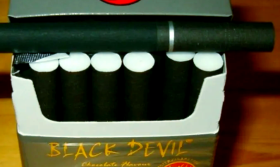The Impact of Tobacco Use on the Efficacy and Duration of Corneal Cross-Linking Treatment
Introduction
Corneal cross-linking (CXL) is a widely used treatment for keratoconus and other corneal ectatic disorders. The procedure strengthens corneal tissue by inducing cross-links between collagen fibers using riboflavin and ultraviolet-A (UVA) light. While CXL has proven effective, various factors—including patient lifestyle—can influence treatment outcomes. One such factor is tobacco use, which has been linked to delayed wound healing, oxidative stress, and impaired tissue regeneration. This article explores how tobacco consumption may reduce the effectiveness of CXL and prolong treatment duration.
Understanding Corneal Cross-Linking (CXL)
CXL is a minimally invasive procedure designed to halt the progression of keratoconus by increasing corneal stiffness. The standard protocol involves:
- Epithelial Removal (or Epithelium-On Technique): Depending on the method, the corneal epithelium may be removed to enhance riboflavin penetration.
- Riboflavin Application: A photosensitizer (riboflavin) is applied to the cornea.
- UVA Irradiation: Controlled UVA exposure activates riboflavin, generating reactive oxygen species (ROS) that induce collagen cross-linking.
The success of CXL depends on proper corneal healing, adequate riboflavin absorption, and optimal oxidative reactions—all of which can be compromised by tobacco use.
Tobacco’s Effects on Corneal Healing and Oxidative Stress
Tobacco smoke contains thousands of harmful chemicals, including nicotine, carbon monoxide, and free radicals, which negatively impact ocular health. Key mechanisms by which tobacco affects CXL include:

1. Delayed Epithelial Healing
- Smoking reduces oxygen supply to tissues due to vasoconstriction caused by nicotine.
- The corneal epithelium requires rapid regeneration post-CXL, but tobacco use slows cell proliferation and migration.
- Studies show smokers experience prolonged epithelial defects compared to non-smokers after ocular procedures.
2. Impaired Riboflavin Absorption
- Tobacco-induced dryness and reduced tear film stability may hinder riboflavin penetration.
- Chronic smokers often exhibit ocular surface disease (e.g., dry eye syndrome), which can interfere with riboflavin saturation.
3. Increased Oxidative Stress
- CXL relies on controlled oxidative reactions to strengthen collagen fibers.
- Tobacco smoke introduces excessive ROS, overwhelming the cornea’s antioxidant defenses.
- This imbalance may lead to suboptimal cross-linking or excessive corneal damage.
4. Weakened Immune Response
- Smoking suppresses immune function, increasing infection risks post-CXL.
- Delayed inflammation resolution can prolong recovery and reduce treatment efficacy.
Clinical Evidence Supporting Tobacco’s Negative Impact
Several studies highlight the adverse effects of smoking on corneal procedures:
- A 2018 study in Journal of Ophthalmology found smokers had a 30% slower epithelial healing rate after refractive surgery compared to non-smokers.
- Research in Cornea (2020) demonstrated that smokers undergoing CXL required extended follow-ups due to persistent haze and delayed visual recovery.
- Animal studies have shown nicotine exposure reduces corneal fibroblast activity, crucial for post-CXL remodeling.
Recommendations for Smokers Undergoing CXL
To optimize CXL outcomes, smokers should consider the following:
-
Pre-Treatment Cessation:
- Ideally, patients should quit smoking at least 4-6 weeks before CXL to improve epithelial healing.
- Nicotine replacement therapy (NRT) may be used, but vaping should be avoided due to potential ocular irritation.
-
Enhanced Post-Operative Care:
- More frequent lubrication with preservative-free artificial tears.
- Close monitoring for signs of infection or delayed healing.
-
Antioxidant Supplementation:
- Vitamin C and E may help counteract tobacco-induced oxidative damage.
-
Alternative CXL Protocols:
- Transepithelial (epi-on) CXL may be preferable for smokers to reduce epithelial healing complications.
Conclusion
Tobacco use significantly impairs corneal healing, riboflavin absorption, and oxidative balance—key factors in successful CXL. Smokers undergoing this treatment may experience prolonged recovery, reduced efficacy, and higher complication rates. Ophthalmologists should counsel patients on smoking cessation prior to CXL and consider adjusted protocols to mitigate risks. Further research is needed to quantify the extent of tobacco’s impact and refine treatment approaches for smoking patients.









